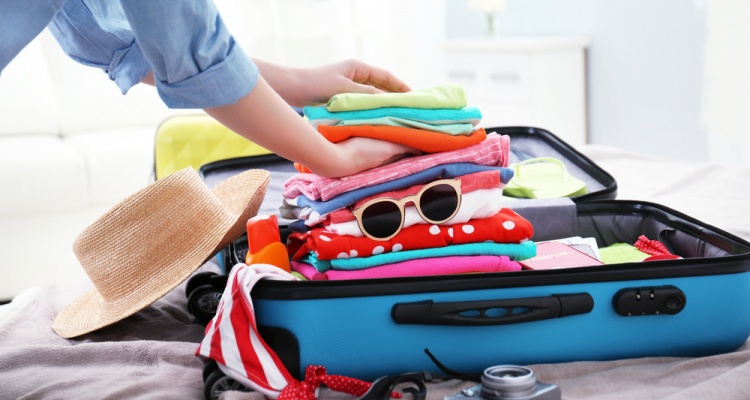Packing can be stressful, especially when considering how to pack liquids for air travel. With the introduction of strict airport security measures and regulations, ensuring that your toiletries and other liquid items are packed correctly has become a vital aspect of preparing for a trip. Fail to do so, and you might find yourself discarding your favorite shampoo or cologne at the airport. In this article, we will explore the best strategies for packing liquids, share some expert tips, and highlight must-have items to make your travels more enjoyable.

Understanding the Basics: What Are Liquids?
Before diving into packing tips, it’s essential to have a clear understanding of what airport security classifies as liquids. The term ‘liquids’ according to air travel regulations includes not only water and drinks but also gels, creams, pastes, juices, and others. Any item that fits these descriptions must follow specific packaging guidelines. Understanding these guidelines ensures smooth sailing through security checkpoints.
Check Airline Regulations
While most airlines follow the same standard regulations, it’s prudent to check the specific guidelines of your airline. You can consult their official website or customer service for the most accurate and recent information. This precaution helps avoid last-minute surprises.
Travel-Sized Containers: A Traveler’s Best Friend
Consider investing in travel-sized containers designed for air travel. These containers typically adhere to the 100ml (3.4 ounces) limit and fit perfectly in a transparent quart-sized bag. Opt for multicolored bottles to easily identify contents and avoid confusion.
How to Use a Quart-Sized Bag
The Transportation Security Administration (TSA) requires that all liquids, aerosols, gels, creams, and pastes should be placed in a single, clear, quart-sized bag. This bag should be easily accessible for inspection. Make it part of your routine packing to check that your bag meets these requirements.
Choosing the Right Toiletry Bag
Explore options for a durable and water-resistant toiletry bag. A reliable bag will keep spills contained and simplify access during security checks. Read more from Toiletry Bag Organization Tips for insights on selecting the best ones.
Secure Lids and Caps
Always double-check that lids and caps are tightly sealed. Even secure caps can sometimes loosen due to changes in cabin pressure. Consider using tape or placing containers in individual bags for added security.
Solid Alternatives: Go Solid Whenever Possible
One effective method to save space and avoid liquid restrictions is converting your liquids into solids. Substitute liquid soaps with bars, and shampoo with dry shampoo. Not only do these options lighten your load, but they also eliminate the risk of spillage and help ensure compliance with airline restrictions.
Find Solid Products
Several brands now offer solid versions of common liquid products. While these might seem unusual at first, they provide a practical alternative for air travelers. Consult essential packing lists for recommendations on solid travel essentials.
Packing Drugs and Special Liquids
Certain medications and essential liquids can be exempt from the standard packing regulations. Products like baby formula, prescription medicines, and essential oils naturally exceed the 100ml limit yet can be packed without worry. Always carry documentation or a doctors note to ensure a hassle-free experience at security b.
Prescription Medication
Ensure that prescription drugs are in their original packaging with a clear prescription label. If you’re traveling internationally, it may also be beneficial to have the prescription translated into the language of the destination country.
Prepare for Security Bin Shopping
Expect scrutiny when traveling with liquids. Be prepared to present your quart-sized bag separately for inspection. One pro tip is keeping it at the top of your carry-on for easy access.
Leverage Smart Packing Methods
Optimize the space in your bag using smart packing techniques. Roll clothing to maximize room and create compartments for better organization. Implementing these strategies will ensure that your liquid items remain secure and organized throughout your journey.
Understanding Cabin Pressure
Liquid leaks often result from changes in cabin pressure during flights. Consider using containers designed to handle pressure changes or pack liquid products in airtight bags for extra security.
Organize Your Bag by Priority
When packing, prioritize your essentials, ensuring easy retrieval when needed. Group similar items together, and make use of packing cubes to maintain separation between liquid and non-liquid items.
Traveling Internationally: Rules May Vary
Keep in mind that international travel might present additional challenges beyond standard regulations. Always research the liquid regulations of your destination country to avoid leaving behind crucial items at security checkpoints.
Backup Plan: Prepare for Spills
Despite your best efforts there might be the odd spill. Carrying a few plastic or zip-lock bags, along with a small cleaning cloth, will help you manage any potential spills.
Stay Updated With Security Advisories
Security rules are continually evolving. Following travel groups, advisories, or news sources ensures that you’re always in the loop regarding the latest regulations. Read more on lightweight luggage to maintain easy packing.

FAQ
Can I carry contact lens solution on a plane?
Yes, contact lens solution is considered as a liquid. As with other liquids, ensure it is in a container no larger than 100 ml and packed in your quart-sized, clear plastic bag.
Are sanitizing wipes considered a liquid?
No, sanitizing wipes fall under solid items and are not subject to the liquid restrictions. You can pack them freely among your items.
What if I have over 100ml of liquid as long it’s partially full?
The container itself must be 100 ml or less, regardless of how much product it contains. Thus, containers over this limit should be transported in checked baggage.
This article contains affiliate links. We may earn a commission at no extra cost to you.

